Members of the Juaneno Band of Mission Indians, Acjachemen Nation-Belardes and California Cultural Resources Preservation Alliance, Inc. are awaiting a decision in their lawsuit against Long Beach State over the dumping of construction-related dirt on Puvungna.
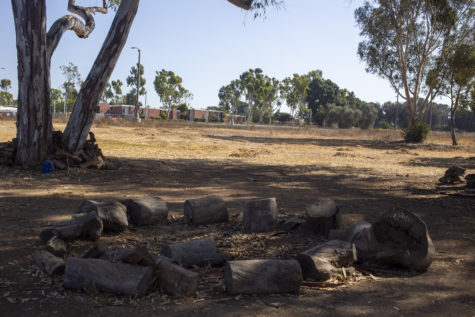
Meanwhile, the Native community that calls the 22-acre plot of land their spiritual home is at odds with the university yet again.
Back in March, much of the school closed due to concerns of an outbreak of the coronavirus on campus. Classes began to be delivered remotely via Zoom, on-campus restaurants were closed and access to Puvungna was restricted.
According to Jeff Cook, CSULB’s associate vice president for strategic communications, access to the land is being limited per state and local health guidelines.
“Because of the current access limitations in place for the campus, we will seek affirmation from the Long Beach Department of Public Health, Los Angeles County Department of Public Health and the State of California Department of Public Health to consider whether the event falls within an ‘authorized use’ under the current guidance,” Cook said in an email.
The event referred to by Cook is the Prayer Walk and rally, an event organized to bring awareness to the Native community’s concerns about the lack of access to the land.
All “non-essential” persons are prohibited from coming onto campus, according to the university’s website. Evidence of on-campus authorization is required, along with mask-wearing and social distancing standards.
Those who fail to comply, per the school’s policy, may be removed from campus and charged with criminal trespassing under California Penal Code 602.6.
The school’s stance on restricting access to Puvungna is upsetting for many, including Michelle Castillo, a member of both the Acjachemen tribe and Friends of Puvungna, an advocacy group that works to preserve and protect the land.
“How would they ask the Native community to fill out an application to pray? How are they forbidding us to go on Puvungna? Their website states they have the right to call police and make an arrest. This is a violation of the American Indian Religious Freedom Act and a slap in the face to all communities,” Castillo said. “We will still exercise our rights as Native people to honor Puvungna, honor our traditions and honor the ancestors. We have been on Puvungna to pray and to clean up. We [all] social distance. We all wear mask[s].”
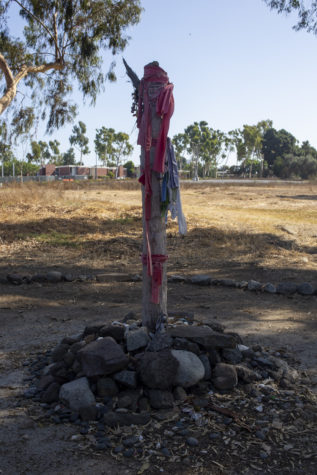
The American Indian Religious Freedom Act of 1978, as Castillo mentioned, “protects the rights of Native Americans to exercise their traditional religions by ensuring access to sites, use and possession of sacred objects and the freedom to worship through ceremonials and traditional rites.”
Bike riders, dog walkers and recreational visitors are a daily sight on CSULB’s campus. However, University Police Department Captain Richard Goodwin said that the guidelines issued on the school’s website are not being “enforced,” but rather monitored. Goodwin also said the responsibility has been handed over to the Division of Student Affairs.
Rebecca Robles, whose mother, Lillian, started Ancestor Walk and annual Ceremony and Pilgrimage 23 years ago, said that a member of the community visited Puvungna last week and a police vehicle approached her. According to Robles, the woman left without speaking to police because her time of prayer had been intruded on and she feared receiving a ticket.
University police did not comment on whether or not it was policy to approach or remove someone if they were on the land and redirected all questions to the communications office.
Cook did maintain, however, that all non-essential personnel are still barred from entering campus.
“We have had information posted on-site and online for a number of weeks stating that only enrolled students and designated faculty, staff and contractors with an essential need for physical access should be on campus,” Cook said.
Robles said that the tribes have since submitted a request for access to Puvungna to host a semi-virtual Ancestor Walk and Bear Ceremony on Sept. 27. The paperwork, as of Sept. 23, was still pending, she said. According to Cook, the university received the paperwork and is still working with local health officials for approval.
However, Robles maintains that the limitations to the land are concerning.
“We know that it is imperative that we continue, and we are depending on the law because the school continues to violate the laws,” Robles said. “It’s a denial of our birthright and an infringement on our rights as Native American people.”
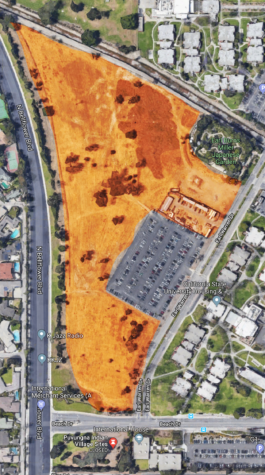
Home to the Tongva and Acjachemen peoples, Puvungna once covered 500 acres of land. Developments, including CSULB, were built on top of the land, leaving only a 22-acre parcel on the outskirts of campus running parallel to parking lot G2.
Puvungna was first recognized on the National Register of Historic Places in 1974 after the community, led by Rebecca’s mother, Lillian, fought against the university’s efforts to build a shopping mall on the land.
It was confirmed then that the land was a sacred burial ground and was home to physical remains.
“It’s very, very clear what Puvungna is,” Robles said.
Legal ownership of the land falls under the state’s jurisdiction.

Not only is access to Puvungna limited due to COVID-19 restrictions, but also the parking lot providing access to the land, G2, is now closed.
According to the Parking and Transportation Services website, select parking lots are closed for fall 2020 to help “ increase security” across campus. With G2 closed, however, persons wishing to go onto Puvungna must park further away, in lot G4.
University police would not say where visitors wishing to go onto the land were expected to park and redirected questions to the communications office.
Land access isn’t the only hurdle the community is facing. Nearly a year ago, construction crews began dumping dirt onto Puvungna in an effort to clear debris away from the Parkside North Dormitory’s construction site. The dirt was filled with rebar, wires and other trash.
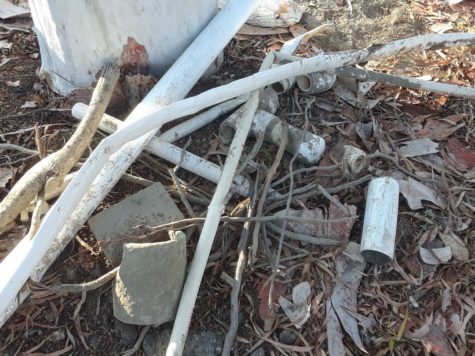
In October of 2019, JBMIAN-Belardes filed a lawsuit against CSULB to hold the university accountable for its actions.
Chairman Matias Belardes said that the tribes are also seeking to establish a memorandum of understanding with CSULB that would require the university to consult with the tribal groups before making any further decisions regarding the 22-acre plot of land.
When pandemic-related shutdowns began in March, courts were closed, pushing back the progress of the lawsuit. Since their reopening, Belardes said there has been little progress made.
“It’s a slow process,” Belardes said. “The main thing was to get the project stopped for them dumping and then moving forward so we don’t have these issues again.”
No more dirt has been dumped on the land, according to Belardes, but the trash-filled piles remain in place.
In relation to the lawsuit, the university filed for a review with the Office of Historic Preservation per California Penal Codes 5024(f) and 5024.5(a), both of which mandate that agencies seek commentary documentation from the office before embarking on projects or making changes to locations registered with the National Register of Historic Places.
According to the commentary, filed by Julianne Polanco, State Historic Preservation Officer, CSULB did not consult with the Office of Historic Preservation before the construction project began as required by PRC 5024 and 5024.5.

Construction crews did lay Visqueen, a polyethylene plastic sheeting, down before dumping the dirt in attempts to protect the land. This is something Polanco said should only be used for shorter periods because “over time [usage] result[s] in adverse effects to buried deposits [and] artifacts because of the accumulation of moisture and heightened decomposition from the plastic.” It is recommended by the OHP that the university seek other alternatives.
Polanco also said that the use of heavy machinery to transport the debris not only may have serious side effects on the buried artifacts from the vibrations caused by their movement, but is also considered to be “inappropriate” on any NRHP listed property.
The JBAIM-Belardes is asking the university to commit to a treatment plan that will remedy not only their concerns, but also the physical damage done to the land, Belardes said.

“Removing the soil, treating the area, getting it back to its original state,” Belardes said. “We feel that it was altered when they dumped on it.”
The university’s treatment plan, submitted to the OHP, includes plans for sensitivity training for all persons involved with future developments and monitoring by Native Americans and archaeologists, soil stabilization and no future vehicular traffic on the land. There is no current plan to remove the dirt piles in question.
According to Polanco, CSULB only submitted an initial draft of its treatment plan as of Aug. 10, 2020, when the review was filed, despite the OHP requesting a final copy. She said the draft “appears to reflect an ongoing need to consult further with tribes.”
Polanco said that environmental testing found that the debris dumped on the land is “not expected to present a significant environmental, health or safety risk” and further sampling of the soil is not recommended. She maintained, however, that “all of these materials should be completely removed because construction materials and debris should not be deposited on an NRHP listed property [as] it is not a construction laydown area.”
The OHP’s review concluded that the university must seek other solutions to reallocate construction-related debris, as “the action of soil deposition has the strong potential to become an adverse effect to the historic integrity of the NRHP historic district.” Polanco said she supports the JBAIM-Belardes’ terms of the lawsuit in seeking a MOU with the university.
Belardes did recognize that the university has made progress in its relationship with the community over the years.
“Long Beach has done some good things in the past and [is] still looking to do good things,” Belardes said. “We have ceremonial places on the campus itself, we’ve been doing the Ancestor Walk for years, they do a land acknowledgement before events. They’re respectful and mindful of certain aspects, but, when it comes to projects and building, they kind of take a left-hand turn.”
For now, the Native community will continue to advocate for access to and respect for Puvungna.
“We want to go back to our sacred places so we may pray, meditate and continue to be Native people,” Robles said.
This article was updated on Sept. 28 at 3:51 p.m. to better reflect information regarding Puvunga.

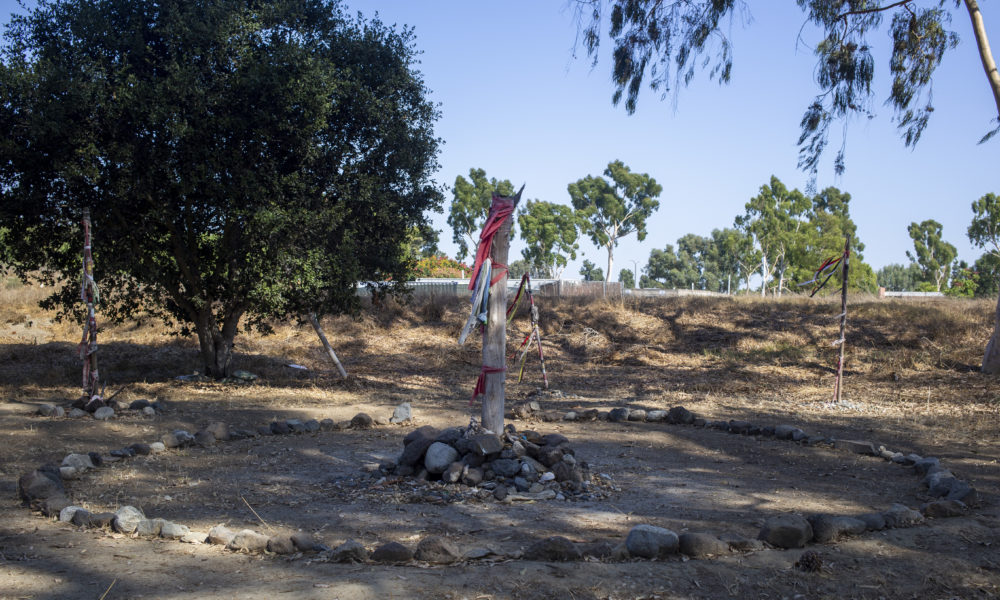
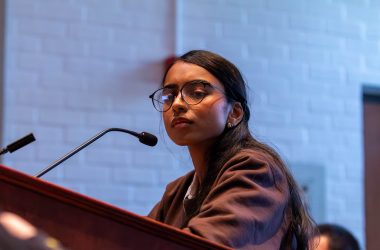

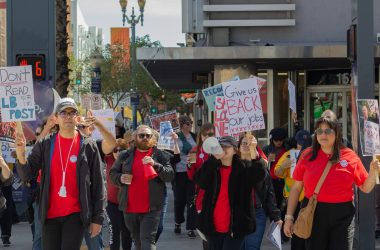
Pingback: Native American Heritage Commission urges CSU, CSULB engage in ‘meaningful tribal consultation’ regarding Puvungna in letter to Chancellor Castro - Daily Forty-Niner
Pingback: Documents show CSULB had intentions of creating parking lot on Puvungna despite claims made by administration - Daily Forty-Niner
Pingback: Native community hopes to implement memorandum of understanding with CSULB, Conoley says parking lot plans are “untrue” - Daily Forty-Niner
Pingback: CSULB denies allegations of plans to build parking lot on Puvungna - Daily Forty-Niner
Pingback: CSULB agrees to cease dumping dirt onto Puvungna - Daily Forty-Niner